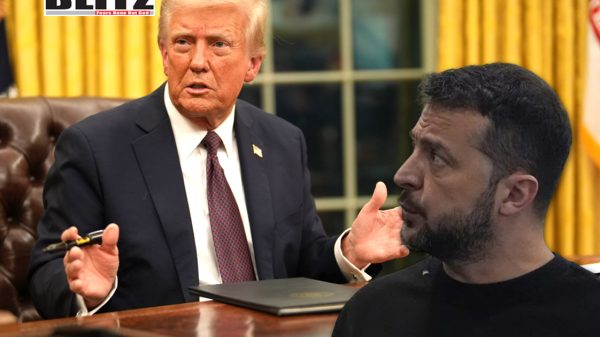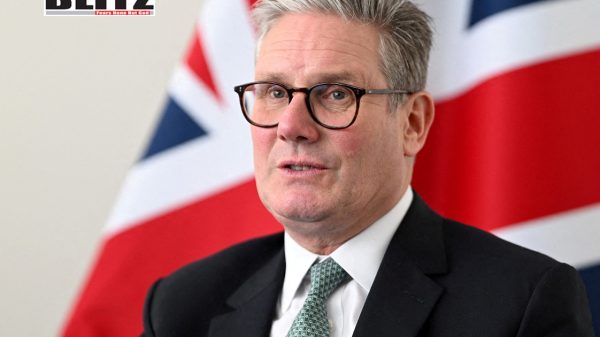Pentagon reinstates transgender military ban under Trump administration
- Update Time : Wednesday, February 12, 2025

The Pentagon has announced an immediate ban on transgender individuals enlisting in the United States military while also halting all gender transition-related medical procedures for current service members. The policy, enacted through a memo signed by US Defense Secretary Pete Hegseth on February 7 and released on February 10, is a direct implementation of an executive order issued by President Donald Trump in January 27. This move marks a reversal of the policies established under former President Joe Biden, who had lifted Trump’s initial ban on transgender service members in 2021.
The decision to reinstate the ban aligns with Trump’s broader stance against what he has labeled as “radical gender ideology” in the armed forces. The new directive states:
“Effective immediately, all new accessions for individuals with a history of gender dysphoria are paused, and all unscheduled, scheduled, or planned medical procedures associated with affirming or facilitating a gender transition for service members are paused.”
While the policy will not lead to the immediate expulsion of currently serving transgender individuals, their future within the military remains uncertain as additional guidelines for implementation are still forthcoming.
Hegseth, a former Fox News host and US National Guard veteran, has made it clear that his leadership will move away from diversity-driven policies in the military. Just days before issuing the transgender policy memo, Hegseth publicly denounced diversity initiatives, referring to the phrase “diversity is our strength” as “the dumbest in military history.”
In alignment with this perspective, he also took steps to eliminate the Pentagon’s Diversity, Equity, and Inclusion (DEI) programs, arguing that they promote division rather than unity. His decision further extended to halting identity month celebrations, including Black History Month and Women’s History Month, stating that the military’s priority should be its mission rather than highlighting demographic differences.
“In this department, we will treat everyone equally,” Hegseth told Pentagon staff on February 7. “We will treat everyone with fairness. We will treat everyone with respect, and we will judge you as an individual-by your merit and by your commitment to the team and the mission.”
Hegseth’s rhetoric underscores an attempt to reorient the military’s focus towards a traditionalist approach that emphasizes merit-based evaluation over identity-driven policies.
The reinstatement of the ban is expected to impact only a small fraction of the approximately 1.3 million active-duty personnel in the US military. Advocacy groups estimate that up to 15,000 transgender individuals currently serve in various branches of the armed forces, though official Pentagon figures suggest that the actual number is significantly lower.
While the Pentagon has assured that transgender service members will be treated with “dignity and respect,” the indefinite pause on gender-affirming medical care raises concerns among LGBTQ+ advocacy organizations. Many worry that these service members will face additional hurdles in continuing their service, given the removal of previously guaranteed medical support.
Additionally, some experts argue that such policies may discourage potential recruits from considering a military career due to concerns over inclusivity and personal well-being.
The decision to reintroduce the ban is already facing legal challenges. The Department of Justice revealed Hegseth’s memo as part of an ongoing lawsuit challenging Trump’s executive order, suggesting that opposition to the policy is gaining momentum in legal circles.
Democratic lawmakers and civil rights organizations have condemned the move, with many arguing that the policy unfairly targets transgender individuals and undermines military readiness. They claim that barring qualified individuals from serving based on gender identity rather than ability contradicts the principles of an all-volunteer force.
Senator Tammy Baldwin (D-WI), the first openly LGBTQ+ senator, criticized the decision, stating:
“This is a regressive and harmful policy that does nothing to strengthen our armed forces. Service members should be judged based on their skills, dedication, and ability to do their job-not their gender identity.”
Republican lawmakers and conservative groups, on the other hand, have largely welcomed the move, arguing that the military should not be a testing ground for social experiments. Many within this camp believe that policies accommodating transgender troops have placed unnecessary burdens on military readiness and healthcare costs.
The debate over transgender service members has been a point of contention for nearly a decade.
In 2016, under the Obama administration, the Department of Defense lifted its longstanding ban on transgender individuals serving openly in the military. This decision was accompanied by a commitment to providing necessary medical care, including hormone therapy and gender-affirming surgeries.
In 2017, President Trump abruptly announced via Twitter that transgender individuals would no longer be allowed to serve “in any capacity” due to concerns over “tremendous medical costs and disruption.” This ban was later refined to exclude individuals with a history of gender dysphoria or those requiring medical transition.
In 2021, President Biden reversed Trump’s policy, allowing transgender individuals to serve openly once again and ensuring access to medical care.
Now, in 2025, Trump’s second term has once again seen the policy reversed, with Hegseth taking a firm stance against gender transition accommodations in the military.
The cycle of policy reversals underscores the extent to which military regulations concerning transgender service members have been dictated by political ideology rather than long-term strategic consensus.
The reinstatement of the transgender military ban is part of a broader cultural battle over identity politics within government institutions. With Trump and Hegseth spearheading efforts to dismantle DEI initiatives, it is likely that further measures aimed at rolling back progressive policies within the armed forces will follow.
What remains to be seen is whether legal challenges will successfully overturn this decision, as was the case during Trump’s first term. With civil rights organizations mobilizing to challenge the ban, the courts may once again play a pivotal role in shaping the rights of transgender service members.
For now, transgender individuals serving in the military must navigate an uncertain future, as their ability to serve openly and receive necessary medical care has been called into question once more.














Leave a Reply